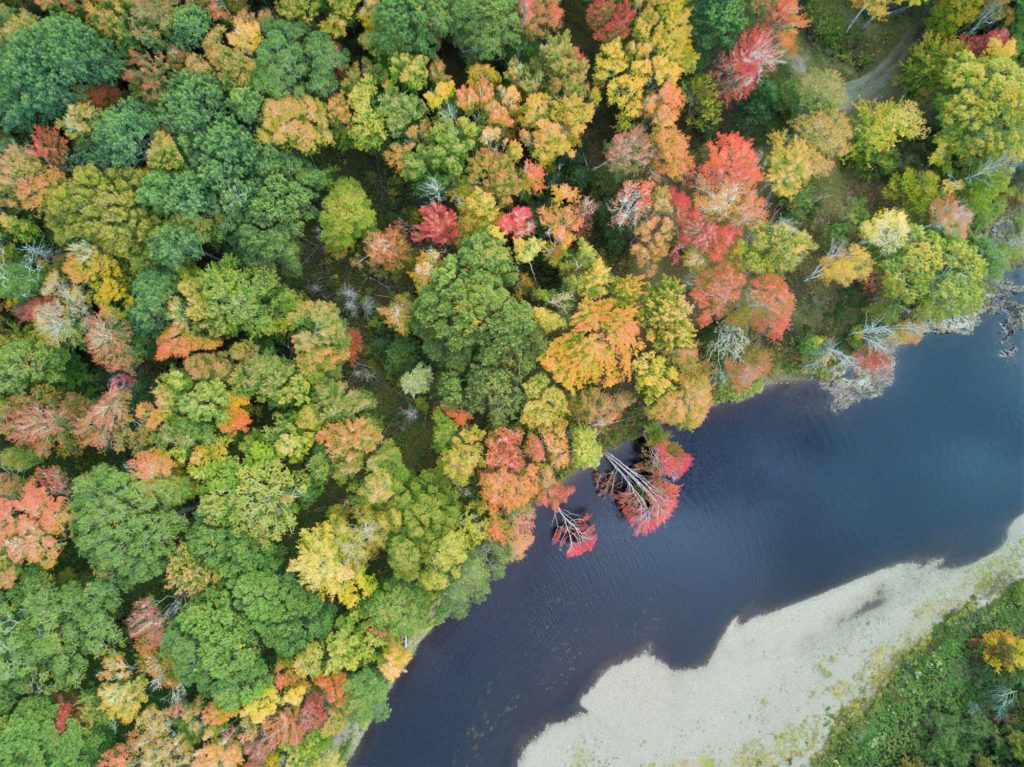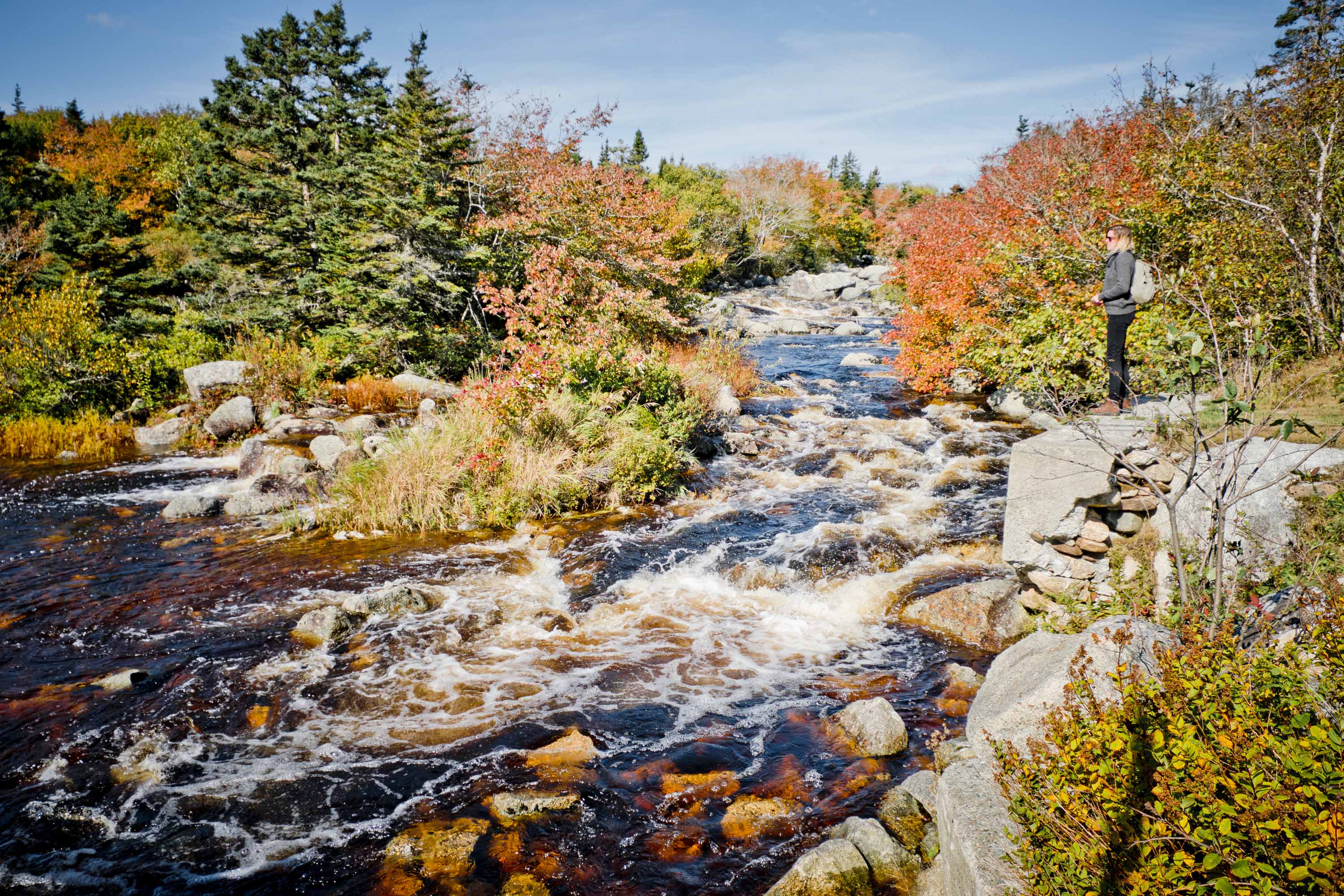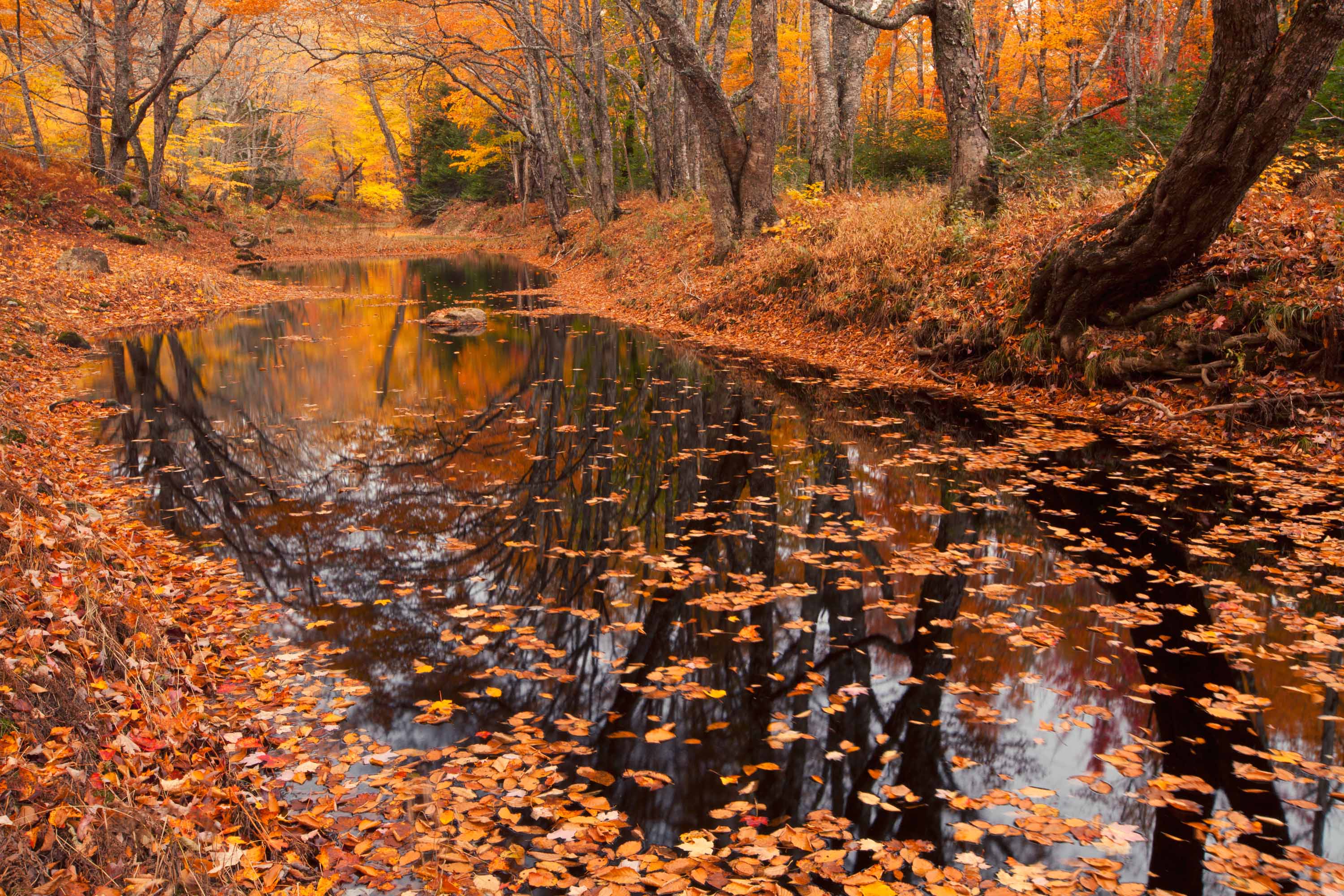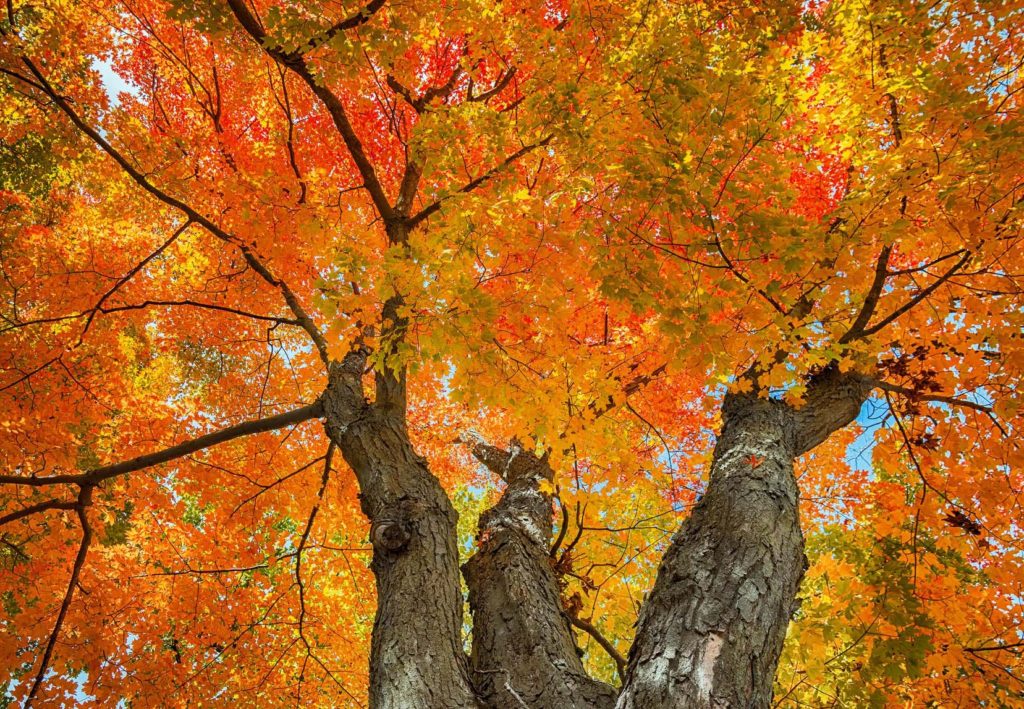Happy Autumnal Equinox!
22 Sep 2019

by Courtney Hangle (Nature Trust Volunteer)
This year the autumnal (or September) equinox occurs on Monday, September 23rd and marks the first day of fall. During this time, the rays of the sun are directly over the equator; as a result, everyone on earth will experience close to 12-hours of daylight and 12-hours of night, a phenomenon that occurs only one other time each year during the vernal (or March) equinox.
In the Northern Hemisphere, we begin to experience all the familiar changes associated with autumn: shorter days and longer nights, colder temperatures, and of course, the beautiful transformation of the trees as their leaves shift from green into an incredibly diverse range of reds, oranges, and yellows, eventually dispersing across the landscape and crunching under our boots.

Pennant River Conservation Lands. Photo: Corey Isenor
As part of the Acadian Forest Region, Nova Scotia contains coniferous (or softwood) trees like Red Spruce (Picea rubens), Balsam Fir (Abies balsamea), and White Pine (Pinus strobus), as well as deciduous (or hardwood) trees such as Sugar Maple (Acer saccharum), Red Oak (Quercus rubra), Yellow Birch (Betula alleghaniensis), and American Beech (Fagus granifolia). While the needles of coniferous trees can change colour and fall off, it’s usually due to stress or disease. Tamaracks (Larix laricina) are the only native coniferous tree in Nova Scotia whose needles change to bright golden yellow in the autumn before they drop off by winter. Despite the splendor of the Tamarack, it’s generally the leaves of deciduous trees that we associate with the allure of autumn.
So why exactly do leaves change colour in the fall? If you guessed it’s due to diminishing sunlight, you’d be right! Throughout the summer months, a green pigment present in leaves called chlorophyll enables the trees to absorb sunlight and use it as energy in the form of sugar via the process of photosynthesis. However, as the seasons change and the sunlight decreases, the chlorophyll begins to break down, causing other colours, many of which were present all along but masked by the chlorophyll, to appear. With no chlorophyll or nutrients left in the leaves, the trees shed their leaves to the ground.

Autumn pond, St. Mary’s River. Photo: Irwin Barrett
While we get to relish in the dazzling display of changing colours, these fallen leaves of autumn are also ecologically important for isolated forests, urban natural spaces, and backyards alike. The leaves not only fertilize the soil as they decompose, but also provide habitat and hibernation spots for animals like frogs and toads and insects like moths and butterflies. Additionally, the leaves, as well as any seeds or fruit still present, provide shelter and sustenance for many bird species such as Chickadees.
Here at the Nova Scotia Nature Trust, we are involved in several projects aimed at safeguarding the stunning and ecologically crucial systems of deciduous trees for generations to come. For example, our work along the St. Mary’s River and in the Mabou Highlands protects some of the last mature to old growth deciduous forests in the province. Take in the transformation for yourself and hike the coastal cliffs of the Cape Mabou Trail or paddle down the majestic St. Mary’s River.
Happy autumnal equinox from everyone at the Nova Scotia Nature Trust!

